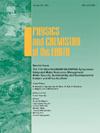南部非洲洪水监测和评估遥感回顾
IF 3
3区 地球科学
Q2 GEOSCIENCES, MULTIDISCIPLINARY
引用次数: 0
摘要
南部非洲是最容易遭受洪灾的地区之一,这严重影响了其经济发展、人类生计和生态系统功能。在这方面,有必要确定监测洪水发生情况的战略,以尽量减少影响。遥感是在空间和时间上监测自然灾害的关键数据源之一。因此,本文对南部非洲自地球观测技术出现以来利用遥感技术进行洪水监测的最新情况进行了回顾。具体而言,审查重点是南部非洲如何利用遥感技术绘制洪水范围图、易受影响地区图和洪水影响图。审查还强调了用于监测洪水的现有遥感数据和产品,包括其成功之处、局限性以及改进该地区洪水监测的前景。总体而言,在 2010 年之前,遥感数据在南部非洲洪水监测中的使用一直很有限。此后,遥感数据在洪水监测中的使用有所增加。这些研究大多使用免费提供的 Landsat 和 MODIS 数据集,这些研究更侧重于绘制洪水范围图。然而,尽管取得了长足的进步,但仍有更多的工作要做。未来的研究需要转向在洪水发生之前、期间和之后使用新一代遥感数据,包括雷达和高空间分辨率无人机。先进的云计算,如谷歌地球引擎和机器学习算法,也为洪水的时间序列分析提供了机会。本文章由计算机程序翻译,如有差异,请以英文原文为准。
A review of remote sensing of flood monitoring and assessment in southern Africa
Southern Africa is one of the most vulnerable regions to flooding and this severely impacts its economic development, human livelihoods and ecosystem functioning. In this regard, there is need to identify strategies to monitor flood occurrence, to minimize effects. Remote sensing is one of the key data sources for natural hazards monitoring, over space and time. This paper therefore provides the state-of-the-art review on flood monitoring, using remote sensing in southern Africa, since the emergency of earth observation technologies. Specifically, the review focused on how southern Africa has embraced remote sensing for mapping flood extent, vulnerable areas and impacts, over time. The review also highlights available remote sensing data and products, to monitor floods, including their success, limitations, and prospects for improved flood monitoring in the region. Overall, there has been limited use of remote sensing data in flood monitoring in southern Africa, until 2010. Since then, there was an increase in the use of remote sensing data, for flood monitoring. Most of these studies used the freely available Landsat and MODIS datasets, and these studies focused more on mapping the extent of flooding. However, as much as considerable strides were made, there is still more work to be done. Future research needs to shift towards the use of new generation remote sensing data, including radar, as well as high spatial resolution drones, before, during and after flood occurrence. Advanced cloud-computing, such as Google Earth Engine and machine learning algorithms, also present opportunity for time series analysis of flooding.
求助全文
通过发布文献求助,成功后即可免费获取论文全文。
去求助
来源期刊

Physics and Chemistry of the Earth
地学-地球科学综合
CiteScore
5.40
自引率
2.70%
发文量
176
审稿时长
31.6 weeks
期刊介绍:
Physics and Chemistry of the Earth is an international interdisciplinary journal for the rapid publication of collections of refereed communications in separate thematic issues, either stemming from scientific meetings, or, especially compiled for the occasion. There is no restriction on the length of articles published in the journal. Physics and Chemistry of the Earth incorporates the separate Parts A, B and C which existed until the end of 2001.
Please note: the Editors are unable to consider submissions that are not invited or linked to a thematic issue. Please do not submit unsolicited papers.
The journal covers the following subject areas:
-Solid Earth and Geodesy:
(geology, geochemistry, tectonophysics, seismology, volcanology, palaeomagnetism and rock magnetism, electromagnetism and potential fields, marine and environmental geosciences as well as geodesy).
-Hydrology, Oceans and Atmosphere:
(hydrology and water resources research, engineering and management, oceanography and oceanic chemistry, shelf, sea, lake and river sciences, meteorology and atmospheric sciences incl. chemistry as well as climatology and glaciology).
-Solar-Terrestrial and Planetary Science:
(solar, heliospheric and solar-planetary sciences, geology, geophysics and atmospheric sciences of planets, satellites and small bodies as well as cosmochemistry and exobiology).
 求助内容:
求助内容: 应助结果提醒方式:
应助结果提醒方式:


